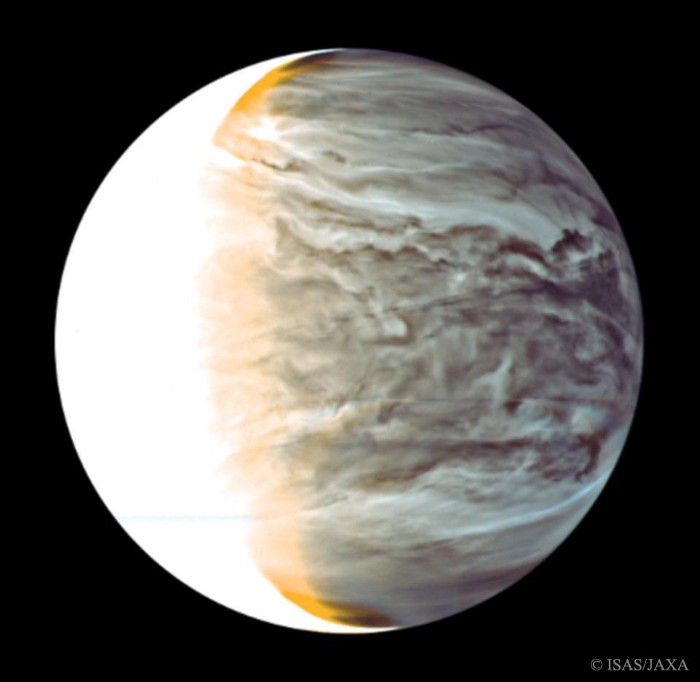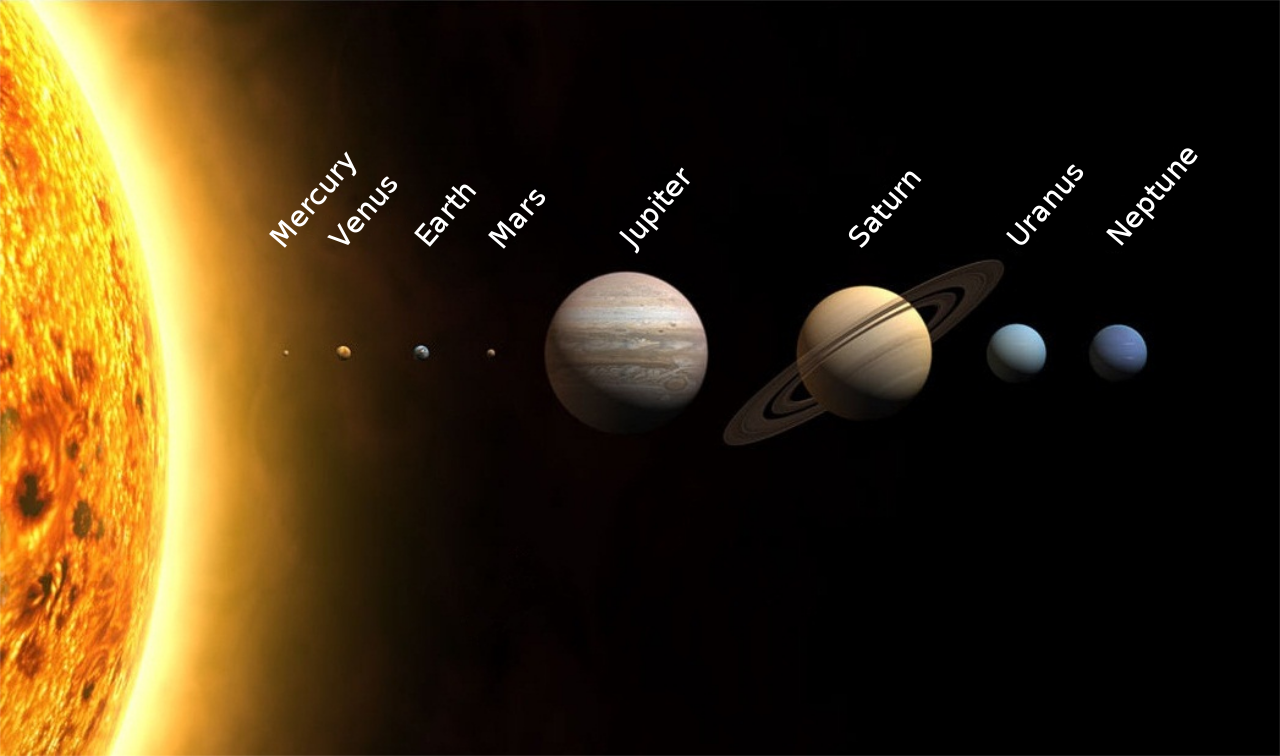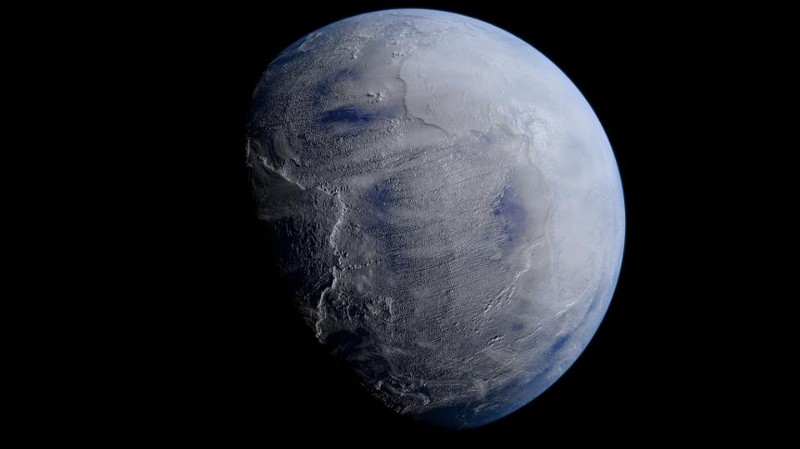Venus is the brightest, most extreme planet in the Solar System

- Although it’s the second planet from the Sun, Venus is not only the hottest planet in the Solar System, but is the most extreme world in our vicinity by many measures.
- If things had gone a little differently on Venus, it might have become an inhabited, Earth-like world, and if Earth had gone a little differently, perhaps we’d have become like Venus.
- Instead, Venus is the brightest planet as seen from an inhabited Earth, and no other star or planet comes close to comparing.
If you’ve been getting up early and viewing the eastern skies before the Sun rises, you may have noticed that there’s one point of light that outshines all the others not only around it, but across the entire sky. That point is the planet Venus, a planet so bright and luminous that it outshines all other objects in the night sky except for the Moon. Every other star and planet pales in comparison to Venus as viewed from Earth, and that’s irrespective of whether Venus is at its closest to or farthest from Earth in its orbit.
The above photograph shows Venus next to Mars — a bright planet in its own right — as it appeared during conjunction on July 12, 2021. At that moment, Venus appeared about 200 times brighter than Mars, or almost six full astronomical magnitudes: equal to the brightness difference between the North Star and the planet Neptune. Although its continued brightness is perhaps Venus’s most notable feature, it isn’t just the brightest planet we can see from Earth, but rather an extreme, remarkable planet in a number of ways. Here’s what gives Venus its remarkable, unique status within the Solar System.

1.) Venus’s atmosphere. Every planet within the Solar System is subject to a few different effects: the gravitational pull from the mass within the planet on one hand, and the particles and radiation emitted from the Sun on the other hand. These two phenomena oppose one another when it comes to the planet’s atmosphere, with the solar wind and radiation working to strip the planet’s atmosphere away while the gravitational pull of the planet works to grow the planet during the early, formative stages and hang onto as much of its atmosphere for as long as possible later on.
Although Mercury was close enough to the Sun and small enough that its atmosphere was fully stripped away long ago, Venus was more distant and more massive, and managed to hold onto its more massive molecular species, particularly its carbon dioxide. It’s speculated that a runaway greenhouse effect took place on Venus long ago, leading to its dense, thick, hot atmosphere, dominated by carbon dioxide and sulfuric acid clouds.
The upper layers of Venus’s atmosphere become ionized due to solar radiation, and this ionized layer, and the magnetic field resulting from the motion of the charged particles within it, protects the rest of Venus from the Sun’s stripping effects: similar to how Earth’s magnetic field protects our own planet’s atmosphere. This protection doesn’t cover everything, however; lighter species of gases — including water vapor — are constantly stripped away by the solar wind, and seen in Venus’s magnetotail.
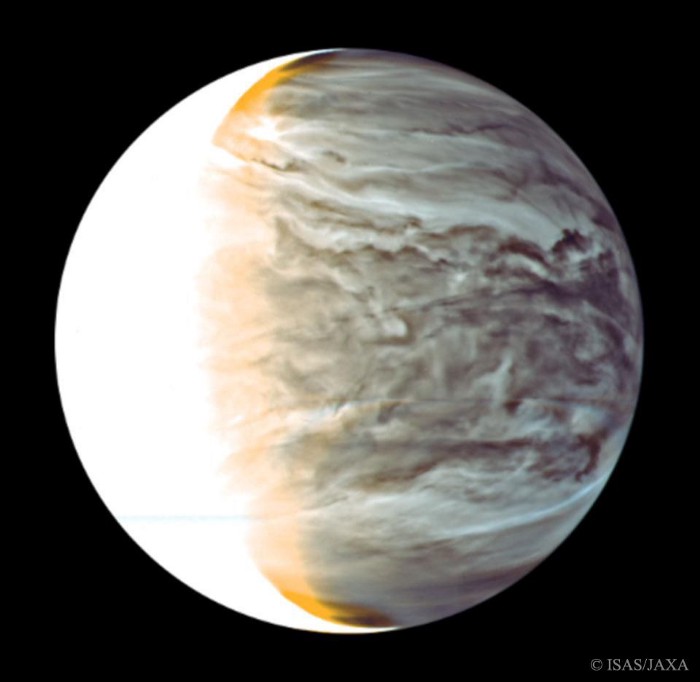
2.) Venus’s clouds. The multiple thick layers of sulfuric acid clouds play a tremendous role in pushing Venus to its extremes. Whereas on Earth, it’s primarily the greenhouse gases in our atmosphere that warm our planet — gases like water vapor, carbon dioxide, and methane, which are transparent at optical wavelengths but absorb and re-emit light in the infrared — Venus’s clouds are the primary heat-trapping agent on our sister planet. On Earth, clouds only account for about 25% of the trapped heat on our planet; on Venus, it’s well over 90%.
Additionally, the clouds on both Earth and Venus are highly reflective, but Earth is only ever partially covered in clouds, and many of Earth’s clouds are thin, high cirrus clouds that reflect only ~10% of the incoming sunlight, as opposed to the thick, low stratocumulus clouds that can reflect more like ~90% of the light. Venus, by contrast, has multiple layers of cloud-decks spanning something like 20 kilometers in altitude, such that 0% of the surface is visible at any time from space, as opposed to more like ~50% for planet Earth. This cloud cover winds up playing a vital role in the brightness of Venus as seen from Earth as well.
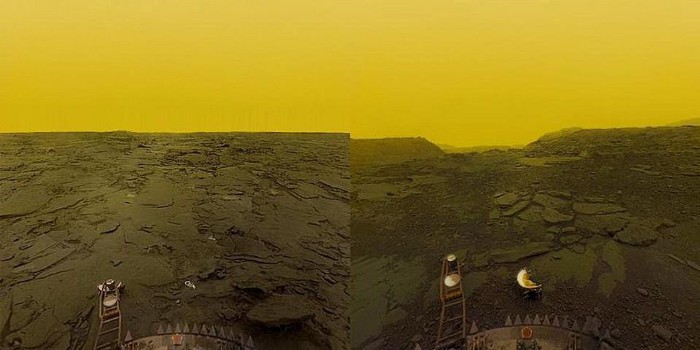
3.) Venus’s temperature. Although Venus is nearly twice the distance from the Sun as Mercury and receives only about 29% of the radiation-per-unit-area that Mercury receives, Venus, not Mercury, is the Solar System’s hottest planet. Whereas Mercury, a practically airless world, can get up to 427 °C (800 °F) in full Sun while its night side can plummet to as low as -180 °C (-290 °F), Venus consistently remains between 440–480 °C (820–900 °F): always hotter than Mercury at its absolute hottest.
While Earth’s greenhouse effect only increases our planet’s temperature by about 33 °C (59 °F), Venus’s is tremendous, increasing its temperature by about 450 °C (810 °F) over the scenario where it’s a completely airless world. Down at the surface of Venus, it’s always hot enough to melt lead; our most long-lived landers operated for fewer than 3 hours upon touching down on the surface. While the surface of Venus might be the most hellish place in our Solar System — in many ways even more extreme than the volcanic surface of Jupiter’s moon Io — about ~60 kilometers up, it’s surprisingly Earth-like. With similar pressures and temperatures to those found at Earth’s surface, Venus, up above its cloud-tops, might already be home to simple but hardy microbial life forms.
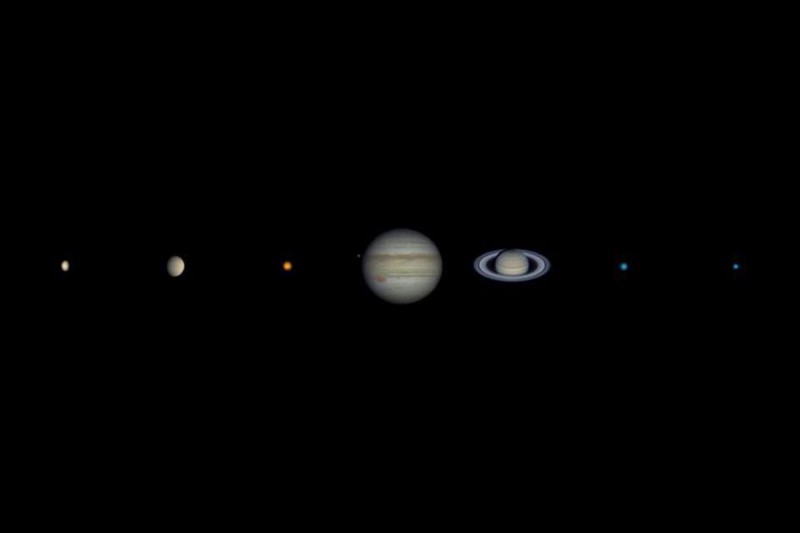
4.) Venus’s reflectivity. This is where things start to get interesting. Every object in the Solar System has what’s known as an albedo: a measure of how reflective its surface is. There are two types of albedo that scientists talk about:
Bond albedo, which is the ratio of the total reflected radiation compared to the total incoming (solar) radiation, and
Geometric albedo, which is how much light actually gets reflected compared to a flat, ideally reflective surface.
By both measures, Venus is by far the most reflective planet in the Solar System, with albedos that are each more than double the next closest planet. Whereas airless worlds like Mercury or the Moon reflect only about 11–14% of the total incoming light, similar to what Earth would reflect if it were airless and free of icecaps, Venus reflects between 75–84% of the total light, dependent upon how it’s measured. This high level of reflectivity makes it appear intrinsically brighter than any other planet in the Solar System, with only a few ice-rich moons, like Saturn’s Enceladus, possessing a higher total albedo.
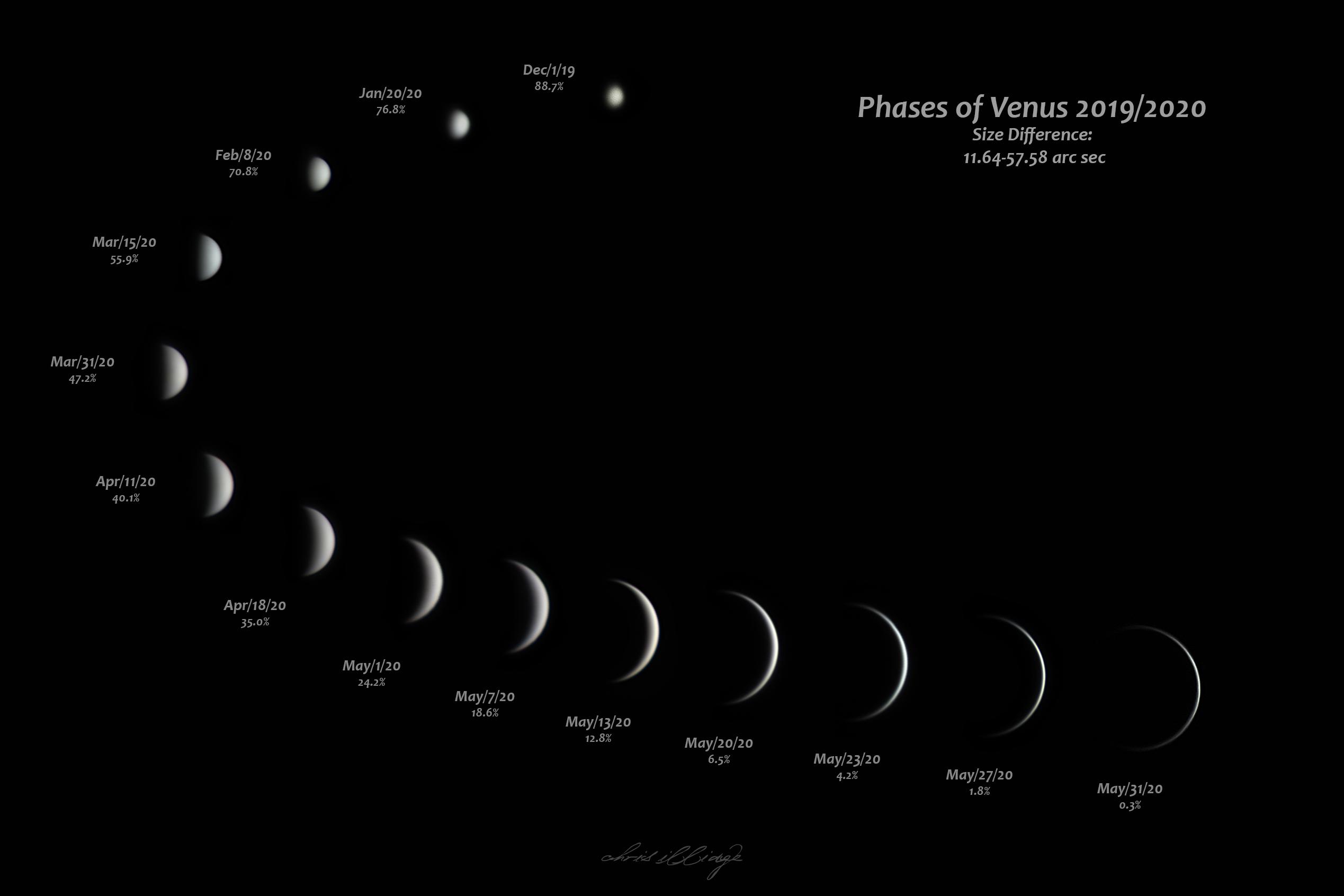
5.) Venus’s appearance from Earth. There are a few different reasons, combined, for why Venus is always the brightest planet in Earth’s night sky. One is that Venus is relatively large (almost the same size as Earth) for a rocky planet as well as relatively close to the Sun; in terms of the total amount of solar radiation incident on its surface, only Jupiter receives more. Two is that Venus is the most reflective planet in the Solar System; the highest percentage of the incoming solar radiation is cast off back into space.
But three is Venus’s proximity to Earth. At its closest, Venus comes within 41 million km (25 million miles) of Earth, closer than any other planet. Even at its most distant, Venus is only 261 million km (162 million miles) from Earth: far closer than Jupiter ever gets to Earth. (The next closest approach of Jupiter to Earth will come in 2022, when it comes within 591 million km, or 367 million miles.)
Even though Venus exhibits the full suite of phases, its crescent phase near closest approach to Earth is when it’s at its brightest, but it’s only slightly fainter when it’s farthest away as it enters its full phase. Even at their brightest, the other bright planets — Jupiter and Mars — can’t compete with Venus, even when at its faintest.

6.) Venus’s role in General Relativity. The first hint we had that something was “wrong” with Newtonian gravity within our Solar System came in the mid-19th century, by observing the orbit of Mercury. Over the past few centuries, we’d been observing Mercury in its elliptical orbit around the Sun, and we saw its perihelion — or its point of closest approach to the Sun — advance in its orbit. The total rate that the perihelion advanced by was 5600 arc-seconds per century, and that rate was a little bit too much for Newtonian gravity.
5025 of those arc-seconds per century was due to the precession of the equinoxes: an effect of Earth’s precessing orbit. The next key in understanding the problem was to calculate the effects of all the other planets on the orbit of Mercury. Although each planet makes a contribution, for a total of ~532 arc-seconds per century, the greatest contribution came from Venus: 277 arc-seconds per century, nearly double that of the next-largest contributor, Jupiter (at ~150), and more than triple the contribution of Earth (at ~90).
The “missing” 43 arc-seconds per century was precisely what Einstein’s General Relativity was able to account for, but without quantifying the contributions from other planets so precisely, particularly from Venus, understanding the role that General Relativity played would have been impossible.

7.) Venus and the birth of transit spectroscopy. Being the second planet from our Sun, Venus is one of two planets (along with Mercury) that’s observed to transit in front of the Sun’s disk from our perspective here on Earth. Unlike transits of Mercury, however, where Mercury simply appears as an opaque disk silhouetted against the Sun, sunlight appears to “curve” around the edge of Venus as the transit both begins and ends. Observations of transits of Venus, which only occur twice per century, on average, were humanity’s first indication that Venus possessed — whereas Mercury lacked — a substantial atmosphere.
But we can do so much more than just detect the existence of an atmosphere during transits: we can actually measure what its atmospheric contents are, molecule-by-molecule. First demonstrated during the 2004 transit of Venus, this technique is now a vital part of exoplanet sciences as we attempt to use transit spectroscopy to discern the atmospheric constituents of planets around other stars. Although, in principle, this was a possibility long before, it’s only here in the 21st century that instrumentation technology has caught up to our scientific dreams.

8.) Venus’s lessons for exoplanets. Today, we look at Venus and we see it as it is now: hot, bright, and shrouded in a thick, dense, heavy-element-rich atmosphere. But it provides us with one of the four main potential fates for a rocky planet interior to a star’s frost line.
- Get too close to your parent star, and you’ll become tidally locked and/or have your entire atmosphere stripped away, like Mercury on both counts.
- Get too far from your parent star, especially if you’re too small, and you’ll become cold, frozen, and inhospitable to life, like Mars.
- If things work out just right in terms of your atmosphere, your size, and your distance from the Sun, you might have liquid water on your surface and a sustained, long-term shot at life.
- But you could still possess a thin atmosphere, avoid tidal locking, and transition from a world with Earth-like potential to becoming a Venus-like hellhole: if your planet experiences a runaway greenhouse effect.
If things had gone differently on Venus, perhaps it, too, could have become a world with a wet, life-rich, self-sustaining biosphere over the long term. Perhaps, in the distant past, things once were very different on Venus, and perhaps there’s a rich history of ancient, early life on that planet. When we’re considering what could be out there on planets beyond our own Solar System, we need to look not just for “other Earths” that may be out there, but for other Venuses as well, as well as any evolutionary steps that it may have underwent along the way.
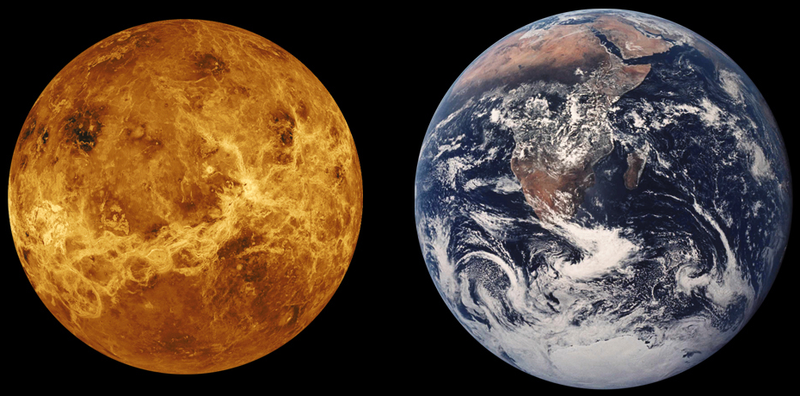
All told, Venus is a planet full of extremes. It possesses the thickest atmosphere of any rocky, terrestrial world known. It achieves the hottest surface temperatures of any planet in the Solar System. It’s the most reflective planet in the Solar System, outclassing even the gas giants. And — of particular interest to observers on Earth — it’s always the brightest point of light visible in the night sky. Whenever it’s not directly behind the Sun, either in the post-sunset or the pre-dawn skies, no other star or planet ever outshines it.
So, with everything we now know, why is it that Venus is the brightest planet in the Solar System?
It’s due to the combination of its large, Earth-like surface area, its relatively close proximity to the Sun, its very reflective, cloud-rich atmosphere, and the fact that even at its most distant, it’s never more than about 1.75 astronomical units from planet Earth. Even when Jupiter and Mars, the next brightest planets, are at their absolute brightest, they still can’t compete with Venus at its faintest. The next time you look up and see an unparalleled bright point of light fixed in the post-sunset or pre-dawn skies, you’ll know precisely why Venus, compared to all the other stars and planets visible from Earth, always appears to outshine them all.
